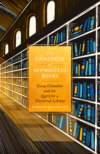Czytaj książkę: «The Catalogue of Shipwrecked Books: Young Columbus and the Quest for a Universal Library»

Copyright
William Collins
An imprint of HarperCollinsPublishers
1 London Bridge Street
London SE1 9GF
This eBook first published in Great Britain by William Collins in 2018
Copyright © Edward Wilson-Lee 2018
Cover illustration by Joe McLaren
Edward Wilson-Lee asserts the moral right to be identified as the author of this work
A catalogue record for this book is available from the British Library
All rights reserved under International and Pan-American Copyright Conventions. By payment of the required fees, you have been granted the non-exclusive, non-transferable right to access and read the text of this e-book on-screen. No part of this text may be reproduced, transmitted, down-loaded, decompiled, reverse engineered, or stored in or introduced into any information storage and retrieval system, in any form or by any means, whether electronic or mechanical, now known or hereinafter invented, without the express written permission of HarperCollins.
Source ISBN: 9780008146221
Ebook Edition © May 2018 ISBN: 9780008146238
Version: 2018-05-04
Dedication
for Kelcey
Contents
Cover
Title Page
Copyright
Dedication
Maps
Epigraph
Prologue: Seville, 12 July 1539
PART I: THE SORCERER’S APPRENTICE
I. The Return from Ocean
II. In the Chamber of Clean Blood
III. The Book of Prophecies
IV. Rites of Passage
V. A Knowledge of Night
PART II: A LANGUAGE OF PICTURES
VI. Shoes & Ships & Sealing Wax
VII. The World City
VIII. The Architecture of Order
IX. An Empire of Dictionaries
PART III: AN ATLAS OF THE WORLD
X. The Devil in the Details
XI. No Place Like Home
XII. Cutting Through
XIII. The Library Without Walls
PART IV: SETTING THINGS IN ORDER
XIV. Another Europe and the Same
XV. The King of Nowhere
XVI. Last Orders
XVII. Epilogue: Ideas on the Shelf
Acknowledgements
A Note on the Life and Deeds of the Admiral
Notes on Sources
Picture Section
List of Illustrations
Index
Also by Edward Wilson-Lee
About the Author
About the Publisher
Maps

The route of Columbus’ Fourth Voyage, 1502–4, on which he was accompanied by Hernando.

Detail of Hernando and Columbus’ route around the Caribbean and Central America in 1502–4.

The route of Hernando’s journey through Europe in 1520–2; the dashed portions are conjectured.

The route of Hernando’s journey through Europe in 1529–31; the dashed portions are conjectured.
Epigraph
Achilles’ shield is therefore the epiphany of Form, of the way in which art manages to construct harmonious representations that establish an order, a hierarchy … Homer was able to construct (imagine) a closed form because he … knew the world he talked about, he knew its laws, causes and effects, and this is why he was able to give it a form. There is, however, another mode of artistic representation, i.e., when we do not know the boundaries of what we wish to portray, when we do not know how many things we are talking about and presume their number to be, if not infinite, then at least astronomically large … The infinity of aesthetics is a sensation that follows from the finite and perfect completeness of the thing we admire, while the other form of representation we are talking about suggests infinity almost physically, because in fact it does not end, nor does it conclude in form. We shall call this representative mode the list, or catalogue.
UMBERTO ECO, The Infinity of Lists
Como todos los hombres de la Biblioteca, he viajado en mi juventud; he peregrinado en busca de un libro, acaso del catálogo de catálogos; ahora que mis ojos casi no pueden descifrar lo que escribo, me preparo a morir a unas pocas leguas del hexágono en que nací.
JORGE LUIS BORGES, ‘El Biblioteca de Babel’
The use of letters was invented for the sake of remembering things, which are bound by letters lest they slip away into oblivion.
ISIDORE OF SEVILLE, Etymologies I.iii
So if the invention of the Shippe was thought so noble, which carryeth riches, and commodities from place to place, and consociateth the most remote regions in participation of their fruits: how much more are letters to be magnified, which as Shippes, passe through the vast Seas of time, and make ages so distant, to participate of the wisdome, illuminations, and inventions the one of the other?
FRANCIS BACON, Advancement of Learning
PROLOGUE:
Seville, 12 July 1539

On the morning of his death, Hernando Colón called for a bowl of dirt to be brought to him in bed. He told his servants that he was too weak to raise his arms and instructed them to rub the soil on his face. While many of them had been with him for a decade or more and were intensely loyal, they refused on this occasion to obey his orders, thinking he must finally have taken leave of his senses. Hernando mustered the strength he needed and reached into the bowl by himself, smearing his face with the silt of the Guadalquivir, the river that meandered through Seville and held his house in the crook of its arm. As he painted himself with mud, Hernando spoke some words in Latin that began to make sense of this performance for those who had gathered at his side: remember that you are dust, he said, and unto dust you will return. On the opposite bank of the river, Hernando’s father – Christopher Columbus, Admiral of the Ocean Sea – had recently been raised from the same soil, from a grave in which he had lain for thirty years. If Hernando’s word is to be believed (and for many things in Columbus’ life we have only Hernando’s word) the men who opened his tomb may have been surprised to find, along with the explorer’s bones, a pile of chains. These chains were a link to a moment in Hernando’s past, when at twelve years old his mostly absent father appeared bound in them, returning as a prisoner from the paradise he looked upon as his discovery and his gift to Spain.1
The meaning of the great explorer’s grave-goods, of these chains that he wished to be placed with him in his tomb, was something Hernando only divulged late in life, when he came to write his father’s story. But the dust with which he painted himself on the morning of his death would have made sense to all around him: it was a symbol of abject humility, humility he knew he could afford to vaunt because there was no doubt he had achieved something extraordinary. Hernando, the man who was welcoming his impending decay with open arms, had built an engine capable of withstanding for ever the onslaught of time. He died shortly after this performance, at eight o’clock in the morning.
An hour later the next act in Hernando’s strange death pageant began. Those closest to him had gathered at his house for the reading of his will, reaching his Italianate villa by the river by passing through the Puerta de Goles (‘Hercules Gate’) and the garden of unknown plants. Hernando had an extraordinary memory, an obsession with lists, and a delicate conscience, so his will tabulated in minute detail the people to whom he felt he owed something, right down to a mule-driver whom he had short-changed nearly two decades previously. But after the tables of his conscience had been cleared, his testament moved on to its great crescendo, a declaration all but incomprehensible to his time. The main heir to his fortune was not a person at all, but rather his marvellous creation, his library. As this was the first time in living memory that someone in Europe had left their worldly wealth to a group of books, the act itself must have been somewhat confusing; but it was even harder to make sense of given the form of the library in question. Most of Hernando’s books were not like the precious manuscripts treasured by the great libraries of the day – venerated tomes of theology, philosophy and law, books that were often sumptuously bound to reflect the great value placed upon them. Instead, much of Hernando’s collection consisted of books by authors of no fame or reputation, flimsy pamphlets, ballads printed on a single page and designed for pasting on tavern walls, and other such things that would have seemed just so much trash to many of his contemporaries. To some eyes, the great explorer’s son had left a legacy of rubbish. Yet to Hernando these things were priceless because they brought him closer to the goal of a library that would collect everything, to become universal in a sense never before imagined. It was not even clear where this strange and multifarious collection began and ended: in addition to all these written works, there were chests and chests of printed images – the largest collection ever gathered – and more printed music than had ever been brought together before. As some accounts would have it, even the garden outside had begun to collect the plant life of the world and arrange it in its beds. There was, however, no word yet for such a botanical garden.2
Visitors to the library would have been greeted by the strangest of sights. The scale of the collection must surely have been impressive, by far the largest private library of the day, blurring the vision as the number of individual items expanded beyond what could be taken in at a glance. Contributing to this disorientation, they might have noticed next that the walls of the library had disappeared. In their place were row upon row of books standing upright on their spines, stacked in this new vertical way in specially designed wooden cases. To the modern viewer these kinds of bookshelves are so familiar as to escape notice, but visitors to the library were encountering these as the first of their kind. This was just one of many elements in Hernando’s fabulous library design that defied explanation, beginning with the inscription at the entrance proudly declaring the edifice was founded on shit. Inside the library, the baffling marvels multiplied: the bookless cages in which readers were supposed to sit, the chests full of volumes that should be turned over two or three times a year but were not for reading, the bookshop of useless titles. Then there was the army of paid readers, and the fiendishly complex system of security and surveillance. Most mysterious of all, perhaps, was the master blueprint for the library, which lay in pieces: more than ten thousand scraps of paper, to be precise, each bearing a different hieroglyphic symbol. Each of the myriad ways these pieces could be put together suggested a different path through the library.3
Darmowy fragment się skończył.











